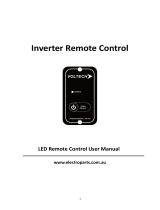
Section-1
04-3004_S1_OPM_ABB_POWERSCALE_10-50kVA_EN_150113.doc Page 7/20 ABB
Printed in Switzerland – Modifications reserved
1.2.4 GENERAL SYSTEM DESCRIPTION
The UPS’s are used to protect sensitive equipment and prevent loss of valuable electronic information, minimise
equipment downtime, and minimise the adverse effect on production equipment due to unexpected power
problems.
The UPS system continually monitors incoming electrical power and removes the surges, spikes, sags, and other
irregularities that are inherent in commercial utility power. Working with a building‘s electrical system, the UPS
system supplies clean, consistent power that sensitive electronic equipment requires for reliable operation. During
brownouts, blackouts, and other power disturbances, batteries provide emergency power to safeguard operation.
The UPS system is housed in single freestanding cabinets. The cabinets line up and match in style and colour, and
have safety shields behind the doors for hazardous voltage protection.
1.2.4.1 Feature : Advanced-Booster Technology
Traditional input THD filters are no longer needed with this UPS product. The build-in advanced booster technology
of UPS modules provides perfect sinusoidal input power quality at 0.99 input power factor with harmonic content
less than 3% THD(i). This leads to more reliable total system operation and savings in generator and transformer
sizing as losses in the windings are minimised.
Due to the active front booster, regulating each individual phase, the UPS is comparable to a clean resistor load
(unity) from the mains perspective. Thus, the high input power factor provides minimised cabling and fusing costs
due to no reactive power consumption. The low harmonic currents are due to high input power factor and provide
the benefits:
No additional losses in wires and cables
No extra heating of transformers and generators with shortened service life
No over sizing of generators
No false circuit breaker tripping and malfunction
No erratic operation of computers, telecommunication, monitors, electronic test equipment etc.
No Resonance with power factor correction capacitors
1.2.4.2 Feature : Flexible Battery Management (FBM)
The Flexible Battery Management (FBM) has been designed in all UPS products with the goal to avoid the
deterioration of battery age. The FBM – Key Features protect the battery from environmental negative impacts
(high temperature and false manipulations) and preserve battery life by advanced management of battery charging
and preventive failure diagnostics. The implemented features result in benefits not only for the end user, but also to
the environment. The battery user will be required to replace his batteries less often. This translates into financial
and environmental benefits. Last but not least a well protected and managed battery is a healthy battery and hence
it enhance the overall availability of the UPS system.
The major benefits are:
AC-Ripple free battery charging due to DC-DC charger separated from the rectifier and inverter
Wide range of number of battery blocks (16-50(*) blocks of 12V)
UPS’S wide input voltage window tolerance extends the battery life due to less discharge cycles
Battery discharge protection caused by load jumps
Proactive battery protection from false manipulations and inadequate charging voltages
Proactive battery failure detection thanks to Advanced Battery Diagnosis (ABD) - Algorithm
User selectable battery tests
Optional temperature compensated charging to enhance battery life




















